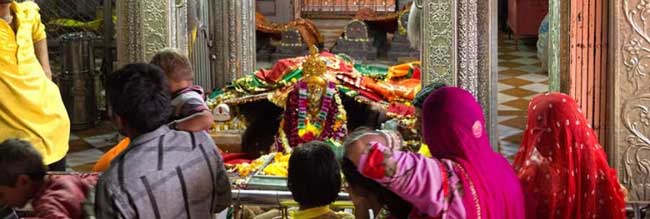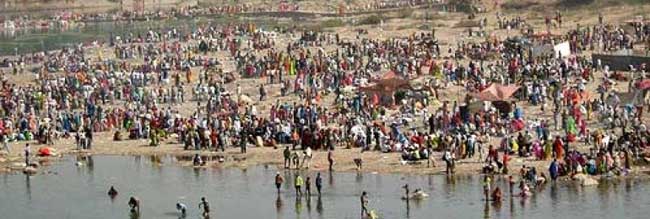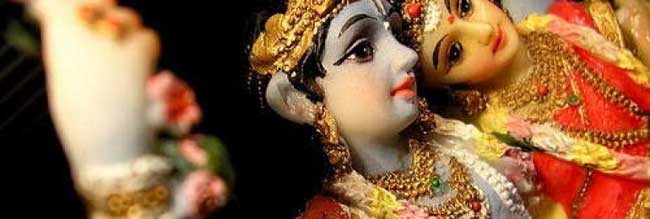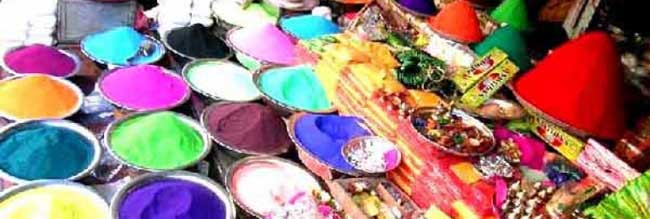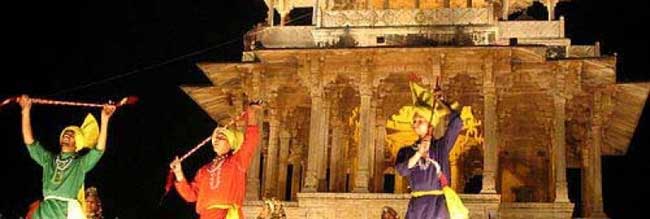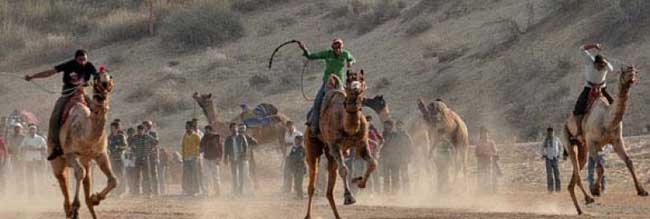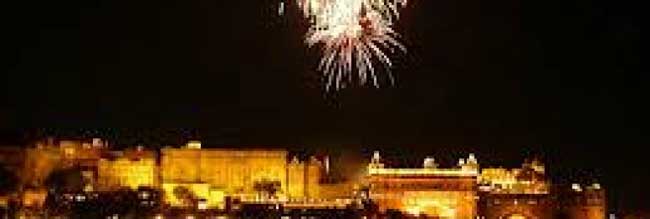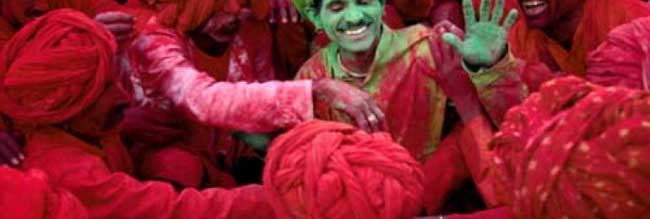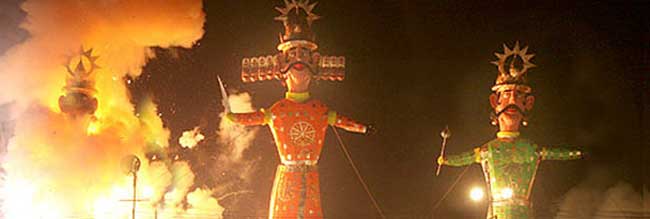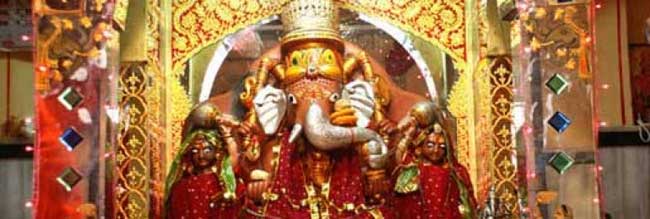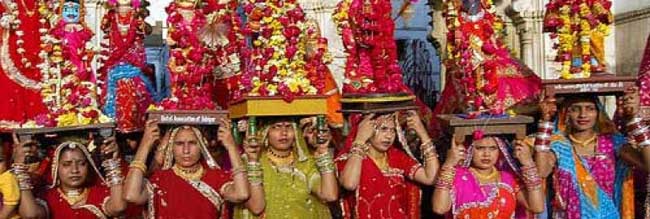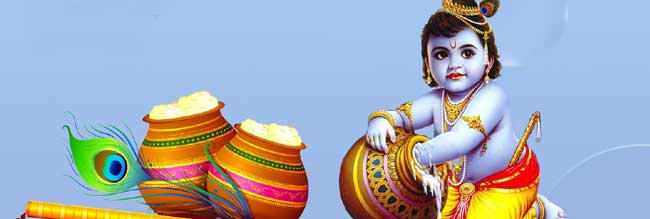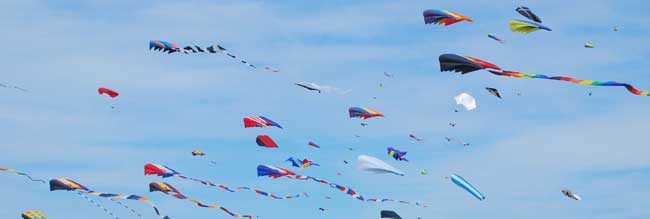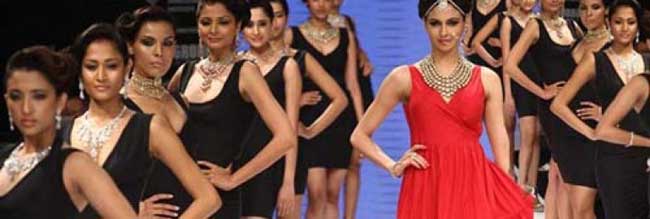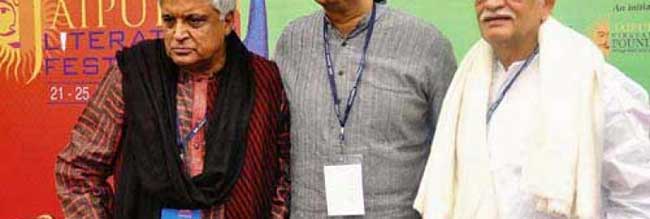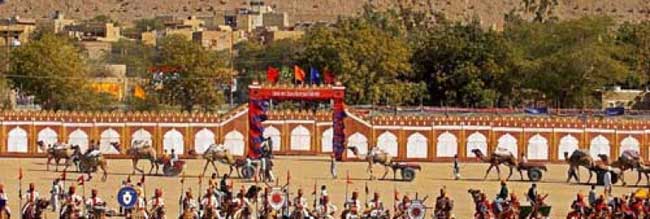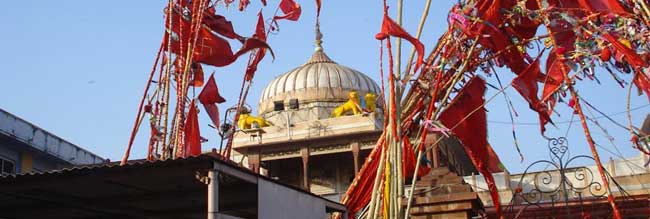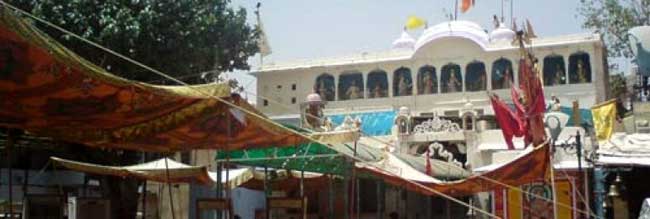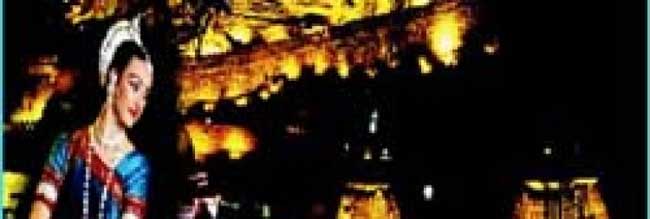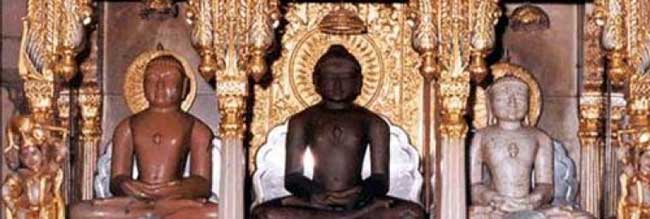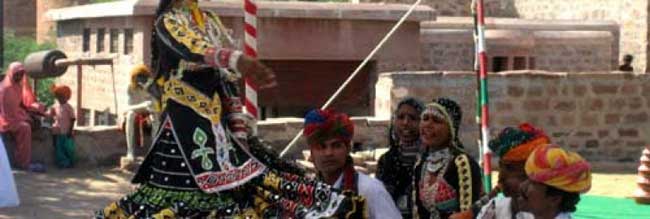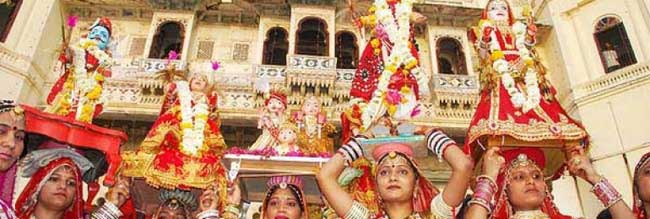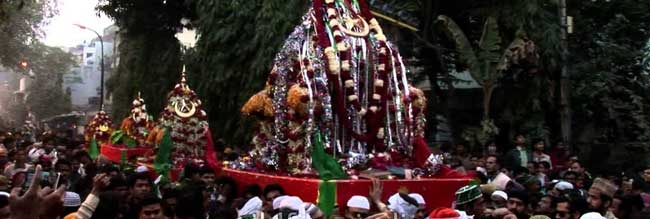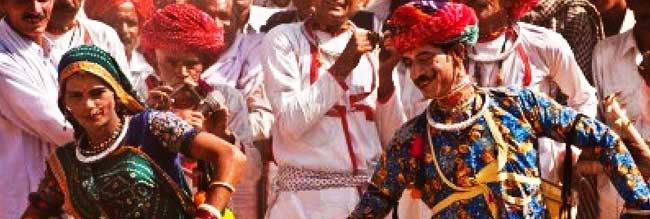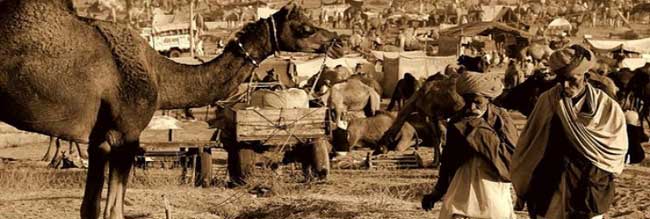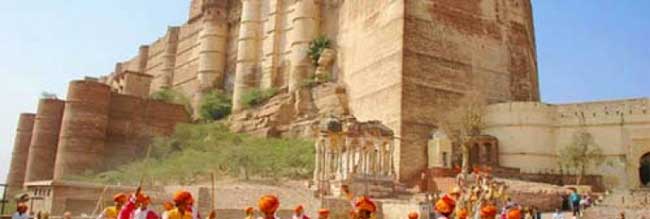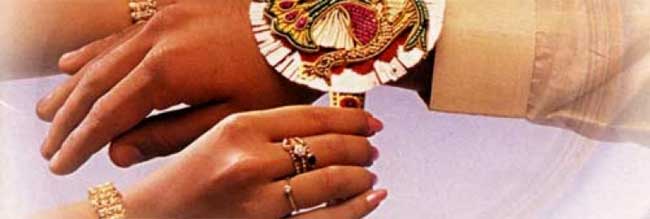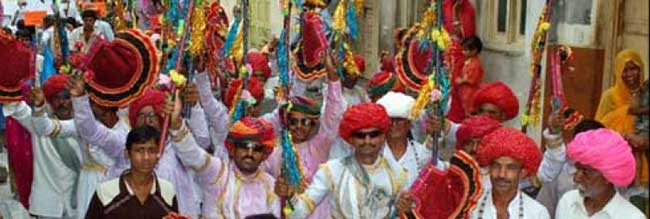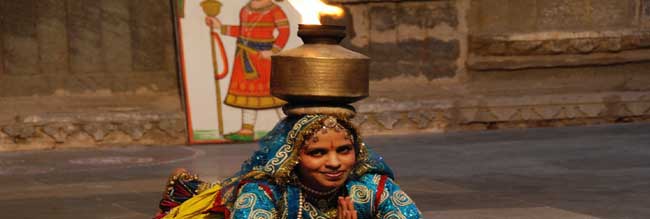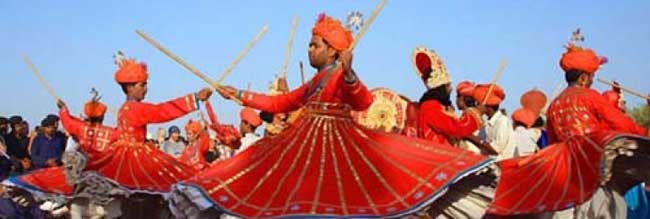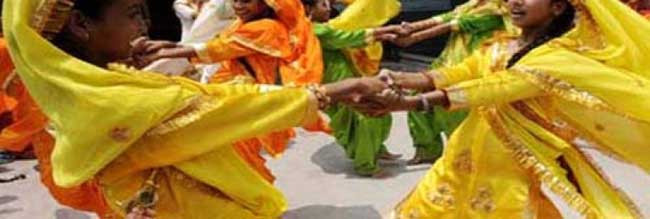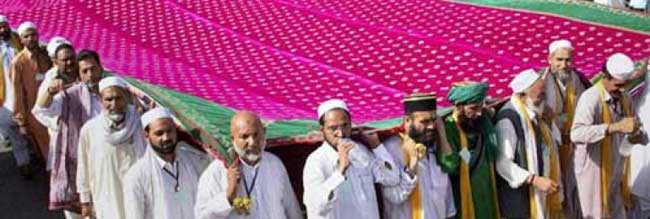

Kaila Devi Fair Karauli One of the most important festivals in Rajasthan, the Kaila Devi fair is celebrated by some of the most powerful Rajput clans like the Khinchis, Yadavs and the princes of Karauli, who consider the goddess to be their guardian deity. Alongside, Kaila Devi is also worshipped ardently by the Meenas and other scheduled castes.
The festival is held at the Kaila Devi temple which stands atop Trikut Hill on the banks of River Kaisil in Karauli. Every year in the Chaitra Budi month of the Hindu calendar (March/April), devotees throng the temple with many offerings like cash, coconuts, kajal (kohl), tikki (vermillion), sweets, bangles etc. The whole area has a mystical and historical aura and the animal sacrifice during the fair gives it a rather primeval appeal.
The most moving part about the festival is the Kanal-Dandoti wherein staunch devotees lie prostrate and crawl their way up to the temple, covering about 15 to 20 kilometres in this manner. This ritual is mostly performed by the successors/followers of Goli Bhagat who was one of Kaila Devi’s most devout believers.
The frolic of the festivities comes with the native dance and song of groups of Meena tribesmen who create an electric ambiance with their gaiety and the spacious courtyard of the temple reverberates with beautiful music and thumping dances in reverence to the goddess.
As is seen across the state, a religious congregation often results into a commercial one and there are many merchants selling colourful bangles, handcrafts and decorative items. The culture and passion of Rajasthan shines through during the Kaila Devi Fair.
History
With the blessings of Kaila Devi, the Chandravanshi rulers of Karauli have always maintained a deep connection with the temple.
The temple is dedicated to Goddess Kaila Devi who is the tutelary deity of the Jadon Rajput rulers of Karauli state.
A detailed description of Kaila Devi Ji is given in the SkandaPurana in the 65th Adhyaya wherein the goddess is said to have proclaimed that in Kalyug her name would be “Kaila” and she would be worshipped as Kaileshwari by her devotees. Furthermore the Vedas say that in Kalyug the worship of Kaila Devi will grant immediate fulfillment.
The goddess Kaila Devi is considered to be a form of the same goddess-Maha-yogini Mahamaya who had taken birth as the child of Nanda-Yashoda, and with whom Lord Krishna was replaced as per the direction of Lord Vishnu. When Kansa tried to kill the girl child, she transformed into her Devi Roop and informed him that the one he attempted to kill was already safe and sound. She is now worshipped as Kaila Devi, and as Vindhyavasini and Hinglaj Mata at other places.
The arrival of the goddess’s likeness to this destination is a fascinating story. The statue was being carried on a bullock cart by a Yogi baba, fleeing from Nagarkot, to protect it. Kaila Devi meanwhile appeared to the sage Kedargiri assuring him that she would come to the people of the area. The Yogi’s sole bullock stopped in the central part of the hill amid the dense forest and refused to budge. By divine ordinance the statue was established at that very place.
With the blessings of Kaila Devi, the chandravanshi rulers of Karauli have always maintained a deep connection with the temple.
Maharaja Gopal Singh Ji laid the foundation of the temple in 1723 and the work was completed in 1730. He also established the statue of ChamundaJi, bringing it from the fort of Gagraun where it had been placed by the Khinchi ruler Mukund Das Ji in 1150.
Arjun Pal Ji built a large Kund, which exists to this date and was one of the earliest large-scale, man-made sources of water in the area.
In 1927 Maharaja Bhom Pal Ji had improved roads constructed and established a power house. In 1947, Maharaja Ganesh Pal Ji had both the interior and exterior of the temple refurbished in marble. The current Maharaja, Krishna Chandra Pal Ji has also made several radical improvements and added multiple modern facilities. The courtyard has been expanded, and several additions made including the administrative block, the staff quarters, the Annapurna Canteen, a large pandal for waiting devotees, and demarcated channels to implement queues for darshan. New dharamshalas, Ram Bhavan and KansalBhavan have been built and some existing ones-SitaBhavan, Ratan Devi and the DholpurDharamshalahave been reconstructed.
Furthermore under the aegis of the Kaila Devi Charitable Trust a hundred bed hospital, the Kaila Devi Senior Secondary School with about 900 students, and a student’s hostel have been set up and are progressing rapidly. A large dam on the Kalisilriver has been repaired and expanded and two smaller dams have been constructed downstream.
The Kaila Devi temple has a glorious past and with the blessings of Kaila Devi Ji herself and with the prayers of her worshippers, has an equally great presence in the future.
The temple is dedicated to Goddess Kaila Devi who is the tutelary deity of the Jadon Rajput rulers of Karauli state.
Celebration
The fair of Kaila Devi is celebrated at village Kaila in the month of Chaitra (March-April) as per the Hindu calendar. It takes place in the temple by the name of the deity. Around two lakh devotees pay their homage at the holy place and participate in the rituals associated with the worship of Kaila Devi.
One such interesting ritual is the ritual of Kanak Dandoti. This ritual sees the followers of the deity lying on their back and drawing lines with their hands and then getting up and traveling up to the drawn line. They cover a distance of 15-20 km in the same way. Some of them even refuse to take any food or water till the time they reach their destination. This ritual is specifically observed by followers of a staunch devotee of Goddess Kaila Devi named Goli Bhagat.
Besides the rituals, the fair also has a lot of entertainment options for all those who assemble to be a part of it. There are amusement rides, dances by local tribes and plenty of eating options. Singing of devotional hymns in praise of the goddess is a vital part of the fair. Groups of Mina tribesmen also perform by dancing and singing, creating a lively atmosphere.
Rajasthan is all about royalty, culture, color, camel and celebration. Rajasthan is also famous for mesmerising lakes, dessert, historical places & forts. A Rajasthan festival includes interesting rituals,ethnicity, tradition festivals and celebrations. Numerous fairs and festivals are celebrated in Rajasthan. All the fairs and festivals feature display of the state’s legacy, colorful artifacts, lip- smacking delicacies, traditional Rajasthani attires, folk songs, folk dance and various interesting competitions. fairs and festivals in Rajasthan offer a chance to travellers to have a glimpse into the art, culture, customs and history of the state. Some of the popular Rajasthan fairs and festivals are Camel Festival, Desert Festival, Pushkar Fair and Urs Fair. Other festivals include Gangaur Festival, Diwali Festival, Kite Festival, Teej, Marwar Festival, Summer Festival. Travel to Rajasthan and participate in the jubilant activities.
